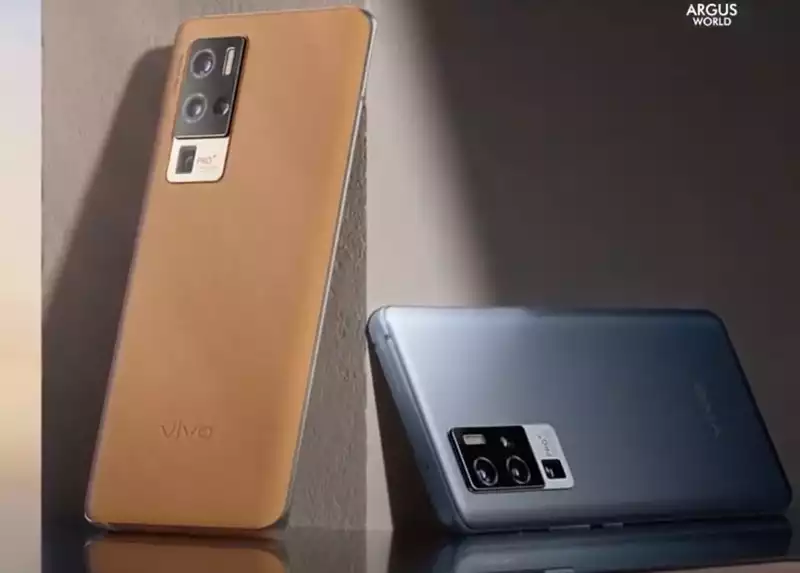Chinese cell phone maker Vivo has unveiled its X50 series, which includes three flagship models. And while the Vivo X50, X50 Pro, and X50 Pro+ will not be landing in the U.S., at least officially, the new models have some camera technology that other phone makers hope to be quick to adopt.
Specifically, the Vivo X50 Pro boasts a built-in gimbal module, which the phone maker says is modeled after a full-size professional gimbal. This feature should allow X50 Pro users to take clear, blur-free photos when moving or shooting at night.
According to Vivo, the gimbal on the X50 Pro moves in the opposite direction of any rocking motion while you hold the phone. This improves stability when taking pictures. In addition, Vivo's gimbal system has a wider rotation angle and anti-shake area than the optical image stabilization technology used in other phones. Bottom line: you can expect clear photos from the Vivo X50 Pro, even when moving around.
While we have not been able to confirm this ourselves, it appears that Vivo has designed a very user-friendly system to take advantage of this feature; Vivo has named it Gimbal Radar, which displays an animated sphere on the screen to let you know when the photo frame is stable so that you can take clear maximizing the probability of getting a clear shot.
This is not the first time Vivo has advertised gimbal capabilities in its phones; in February, Vivo showed off the Vivo Apex 2020, which also has a built-in gimbal; the X50 will actually go into production; and the X50 will be the first Vivo phone to have a gimbal feature. So it is increasingly likely that other handset makers will be able to replicate this feature in their own handsets.
It is unlikely that this will happen in 2020, at least as far as rumors about other major smartphones to be released in the second half of this year are concerned. Samsung's Galaxy Note 20, for example, is expected to use the same camera module introduced in the Galaxy S20 lineup earlier this year, but it will likely have a dedicated sensor to aid in autofocus. as for the iPhone 12, the main focus of the camera is appears to be on adding a LiDAR sensor to the Pro model, which will improve portrait photos and allow for augmented reality (AR) apps. These are welcome additions, but improvements to image stabilization are not necessarily planned.
Vivo's release is worth paying attention to. This phone maker has a habit of introducing new flourishes that eventually find their way into other handsets; in 2018, I saw a demo of a Vivo phone at CES, where the company showed off its first in-display fingerprint sensor. These days, it's a fairly common sight in smartphones, from the Samsung Galaxy S20 to the OnePlus 8 Pro.
While the Vivo X50 Pro's gimbal caught our eye, it's not the only notable camera feature: the X50 Pro has four rear cameras, led by a 48-megapixel Sony IMX598 sensor in the main lens. (The X50 Pro+ replaces the Sony sensor with a 50-megapixel Samsung Isocell GN1.)
The cameras on all Vivo X50 models perform well from a distance, thanks to a periscope lens design that provides 60x digital zoom. This is not as good as the 100x zoom achieved by the Space Zoom lens on the Galaxy S20 Ultra, but it is higher than the up to 50x zoom on the Huawei P40 Pro.
The Vivo X50 Pro also features Super Night Mode and Astro Mode for better low-light photography, and Super Wide Angle and Super Macro functions for stretching and getting closer, respectively.
A Snapdragon 865 system-on-chip drives the X50 series, with display refresh rates of 90Hz and 120Hz, faster than the typical 60Hz refresh rate found on most phones. Vivo also touts the X50's thinness at 7.49mm, which surpasses thinner designs like the Galaxy S20 Plus (7.49mm). (8 mm) and OnePlus 8 (8 mm). The Galaxy Z Flip is thinner at 7.2 mm from 6.9 mm, but this is only when its foldable phone is open.
While the Vivo X50 series is unlikely to land in the U.S., it is likely to land in markets outside of China; in the release announcing the launch of the X50, Vivo said these will be the first X series products to hit international markets, though the company did not say when or where. .
.









Comments